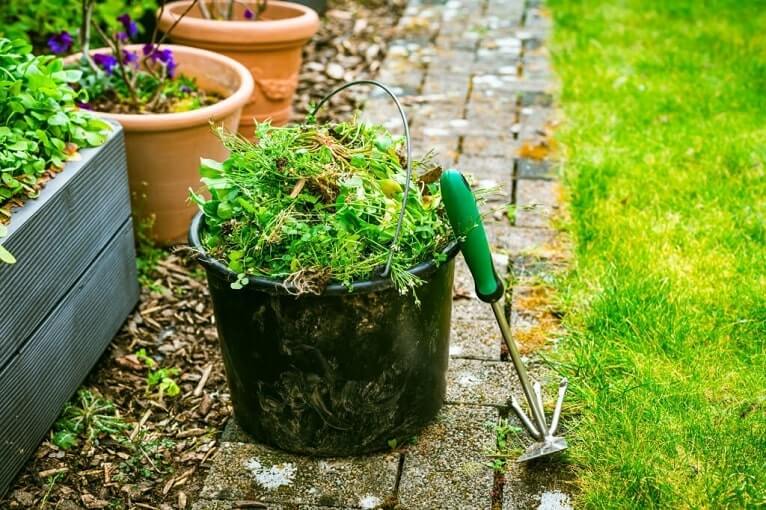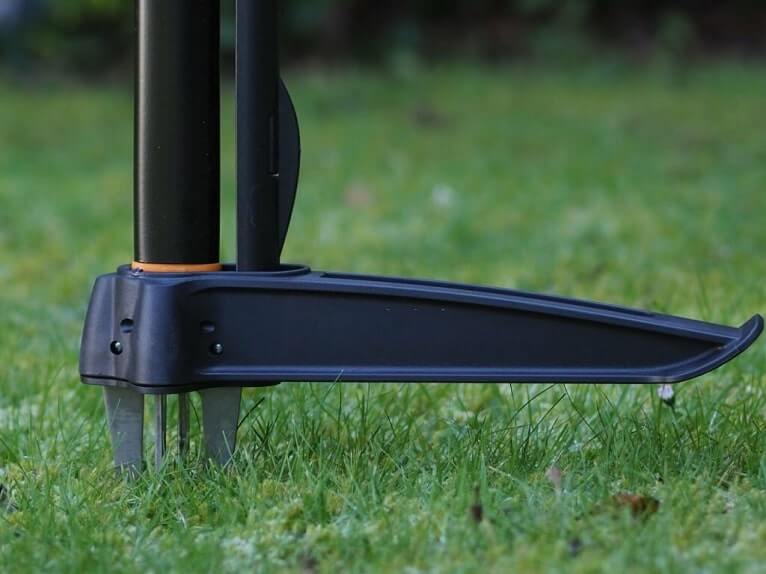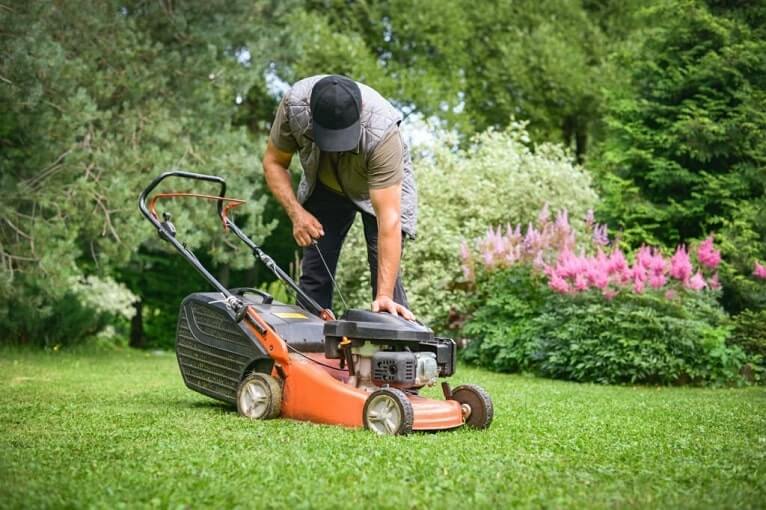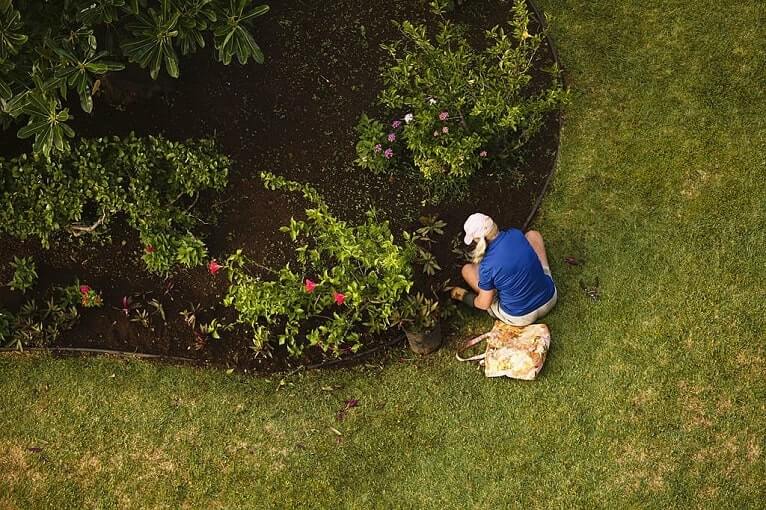
Having flower beds full of weeds? Areas covered with dandelions in your garden? With our tips, you’ll get rid of weeds in your garden and stop them from spreading around in your beds.
There are all kinds of weeds in our gardens that self-sow earlier, wherever they get the chance.
They are often a pain – especially when they sow themselves penetrate our beds and precious flowers and deplete the nutrients from the soil.
In some cases, weeds like stinging nettles, will often tend to do more harm compared to their mild appearance.
Most people know how stinging nettles can spread rapidly before you can blink your eyes, or how knotweed can tear through structural foundations at breakneck speed.
Luckily, there are some great methods today to get rid of weeds and these plants from our beds. Some approaches don’t even require any chemicals.
1 – Dig up the roots with a simple grab

It’s an old-fashioned method, but luckily it still works today. By digging up weeds by the roots, the weeds will disappear completely from your lawn and beds in your garden.
It’s an all-natural method that has proven to be one of the most effective methods of all time.
Using a Weed Puller from Fiskars or even a hand towel can do the work. Gently lever the weeds out of the soil and the roots, to prevent rapid regrowth.
This method is ideal if you only have a small bed with weeds or one or two weeds on your lawn in your garden. If your lawn is full of weeds, you may need to invest in some decent weeding tool.
Some weeds require more care with this method such as Japanese knotweed, but usually, it’s enough care for your bed or lawn by removing the weeds with the roots.
The reason for this is that some weeds can replant themselves from even the tiniest fragments of their roots.
2 – Adding mulch

By adding mulch on top of the soil, you’ll add nutrients to your garden soil but it is also a simple and easy way to suppress weeds.
Garden compost, wood chippings, and other biodegradable mulches will be able to suppress weeds and add essential nutrients back to the soil. This helps your plants to flourish.
However, add mulch but can’t be used all over your lawn if it’s full of weeds, as the grass will not have the right conditions to grow if it is covered by mulch. If that’s the case, I will use one of the other methods.
Keep in mind that if you add mulch to your soil to prevent weeds, it has to be replaced every few years, since it breaks down over time.
3 – Mow your weeds down

Mowing your lawn frequently will weaken lawn weeds and it’s a great way to deter them. Mowing down the weeds stops them from setting seeds, which can help get rid of them completely.
A great tip is to use a mower with a basket so you can pick up the grass, rather than leaving the on your lawn.
If you leave your clippings on the lawn, the seeds can spread around and escalate the problem even more.
When your lawn has been weed-free, you can again remove the attached basket on your mower and it will not be a problem to leave clippings on your lawn.
On the contrary, it will act as a natural fertilizer for your lawn.
How do you keep weeds from growing at the bottom of a tree?
Persistent weeds such as stinging nettles or couch grass are often widespread under trees. They tend to become tangled up in the root systems of the trees, making them very hard and difficult to eradicate.
The weeds will compete with the trees for nutrients in the soil and therefore must be removed.
A less time-consuming way to tackle weeds around a tree is by applying a layer of mulch, which will kill the weeds due to the lack of light and air.
Another simple way to tackle weeds around a tree is by removing it on a dry day when any leftovers will wilt quickly due to the bad conditions.
These are some of the simplest and easiest ways to prevent and tackle weeds from growing at the bottom of a tree.
How to get rid of weeds in flower beds

Whether they are weeds in your lawn or your flower bed, they are annoying to have and they steal nutrients and sunlight from your other plants.
To get rid of weeds in your flower bed, you can either pull weeds by your hand or spray them with herbicide to get rid of the weeds.
However, both of these techniques may not eradicate them at all, because some of the weeds tend to drop seeds, while you’re pulling them out of the soil.
Other weeds have an incredible root system, which can re-sprout again after the herbicide washes away.
3 great ways to get rid of weeds in your flower beds are to use a weed barrier, add a layer of mulch, or use compost.
Weed Barrier: A weed barrier means that you lay down cardboard or burlap in your flower beds before you start planting to prevent the weeds from growing effectively.
Apply mulch: A thumb rule says, that a 3-inch layer of mulch prevents weeds from seeing the light of day. Furthermore, it provides your flower bed with a decorative appearance and improves moisture.
Compost: Another way to get rid of weeds in your flower bed is to use compost.
The way may not be as effective, but when you add a great compost of fresh infusions or any other organic matter, the dormant weed seeds tend to be less likely to germinate.
That helps you to prevent the weeds from growing and take water and nutrients from the other plants in your flower bed.
How do I get rid of weeds under my evergreen tree?
The most effective way to get rid of weeds under evergreen trees is to pull the weeds up and remove the roots from the ground when the soil is moist and loose after a rainy day.
An alternative way to treat weeds under your evergreen tree is to use and spray herbicide on the weeds that contain glyphosate.
Try to avoid over-spraying the weeds and use it before the weeds set seed and are not actively growing.
The best conditions for using a spraying herbicide is on a dry day and if one time isn’t enough, wait two or three weeks and reapply.
Just as you can use mulch to avoid weeds in your flower bed, you can also use mulch to avoid weeds under your evergreen tree. Apply 2-3 inches of fine mulch or 3-6 inches of thicker mulch.
Try to avoid applying the mulch near the evergreen stems or trunks – not within 3 inches because you may encourage pests or disease. Remember to replenish mulch under your evergreen tree 1-2 times a year as it will slowly degrade.
Hopefully, some of these ways can help you get rid of weeds under your evergreen trees.
How do I get rid of weeds in my gravel driveway?

Weeds can be annoying in the lawn and flower beds, but weeds can also easily get into your gravel driveway.
Weeds are not only unsightly to look at but somehow manage to thrive in this driveway gravel.
A great and effective way to get rid of weeds in your gravel driveway is by using rock salt and it’s a natural weed killer.
By simply sprinkling some rock salt on the soil around the weed, you can remove the weed. Wait some time and sit back while the rock salt works and kills your weeds in a few days. It’s simple but effective.
Keep in mind that this method has pretty long-term results because the rocky salt will gradually seep into the soil where it is sprinkled and thus prevent weeds (or plants) from growing there for a while.
As if weeds are growing in your lawn or your flower bed, you can also pull up your weeds with your hands in your gravel driveway.
It is at least as effective, but remember to get all the roots up when the weeds are pulled up.
Otherwise, you risk it coming again and often in even greater quantities if the seeds have first spread in your gravel driveway.
Take a good hold of the weed and slowly pull/work the weed. When you feel the soil loosen, you can pull it up from the ground and you will thus pull the root up as well.
Simple DIY option

A simple mix can do wonders. If you mix dish soap and vinegar, you have a great mix to control weeds at your gravel driveaway.
A simple and effective recipe is as follows:
- 1 ounce to 4,5 L of vinegar
- Then spray the mix around the weeds and repeat this until every weed has been covered.
To see the best results, try to avoid days with rain, so the mix doesn’t get washed away or even seep into other nearby plants close to your gravel driveaway.
Can weeds turn into trees?
Yes, some weeds may turn into trees and some others don’t.
Weeds come in so many different species and if you look at weeds growing in a flower bed, it will often be a mix of both herbaceous plants and seedlings of trees and shrubs.
However, every tree starts small from the start when the tree is only a few inches tall tree seedling.
It all depends on the variety and the conditions for it to grow big, where some don’t grow that much their first year.
If you see some weeds start growing in your garden or your flower bed and you want to replace it in a better spot, you can transplant it somewhere else.
Many people don’t think of that, but that’s a great way to use your weeds in a great way and a way to get free plants. It’s a win-win. What’s not to like?
How big can weeds grow?
Why do weeds keep coming back?
The reason why weeds grow back again after they have been sprayed is because the roots or seedlings still are in the soil and have not been removed completely.
Even though the weeds get sprayed and will be killed, if the roots aren’t removed completely, they will start producing more weeds.
However, there’s nothing more frustrating than spending time removing weeds, but it keeps coming back.
fed: To get rid of weeds for good you can use various strategies at once. Pulling, spraying, and using herbicide can do the trick to get rid of those weeds forever.
It’s often seen that if you only use one of these strategies the weeds keep sprouting up again.
This means you have to invest some time and money to get rid of your weeds for good otherwise it will keep sprouting back again and again.
Before you go …
If you are going to plant daffodils in your garden, do you know how far into the ground they should be planted?
Or do you know how to protect your fruit trees through the winter? Or whether fruit trees can grow on slopes at all?
Read our articles if they interest you and learn more about these areas.
Hopefully, we have one or two tips that you can use yourself.
